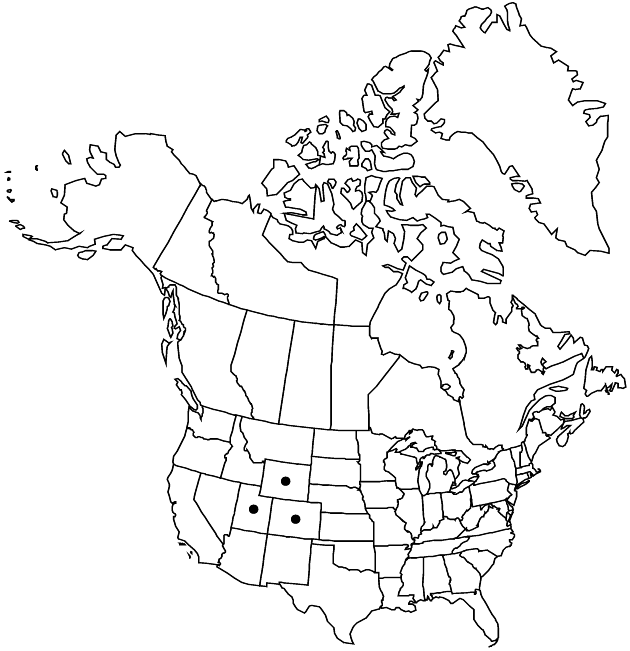Pyrrocoma clementis
Bull. Torrey Bot. Club 27: 625. 1900.
Plants 3–18(–40) cm. Stems 1–5, ascending or decumbent, pale and often red-tinged, sparsely villous, sometimes tomentose. Leaves (persistent, thick, ± fleshy); basal petiolate, blades lanceolate to narrowly oblanceolate, 50–140 × 9–16 mm, margins usually entire, sometimes slightly undulate, sometimes denticulate, sparsely ciliate, apices acute to obtuse, faces usually glabrous, sometimes puberulent or villous, eglandular; cauline sessile, lanceolate to ovate, 20–40 × 5–10 mm, bases clasping, auriculate. Heads usually borne singly, terminal, sometimes 2–3 smaller proximally, not subtended by leaflike bracts. Peduncles 0.5–1 cm. Involucres broadly campanulate, 8–15 × 20–35 mm. Phyllaries in 3–4 series, green with white margins, sometimes yellowish, lanceolate to oblanceolate, 6–12 mm, unequal, margins entire, ciliate, apices obtuse to acute or acuminate, faces villous. Ray florets 21–55; corollas 10–18 mm. Disc florets 100+; corollas 6–8 mm. Cypselae subfusiform, not compressed, 4–7 mm, 4-angled, faces striate, sericeous or glabrous; pappi tawny, 6–8 mm.
Distribution

Colo., Utah, Wyo.
Discussion
Varieties 2 (2 in the flora).
Pyrrocoma clementis is recognized by its villous to tomentose stems, villous and ciliate phyllaries, and high elevation habitat, often well above tree-line. It is similar to P. uniflora, which has narrower heads, finer floccose-tomentose pubescence, and grows at lower elevations.
Selected References
None.
Key
| 1 | Phyllaries narrowly obovate, abruptly acute; cypselae sericeous | Pyrrocoma clementis var. clementis |
| 1 | Phyllaries narrowly lanceolate, apices attenuate; cypselae glabrous | Pyrrocoma clementis var. villosa |